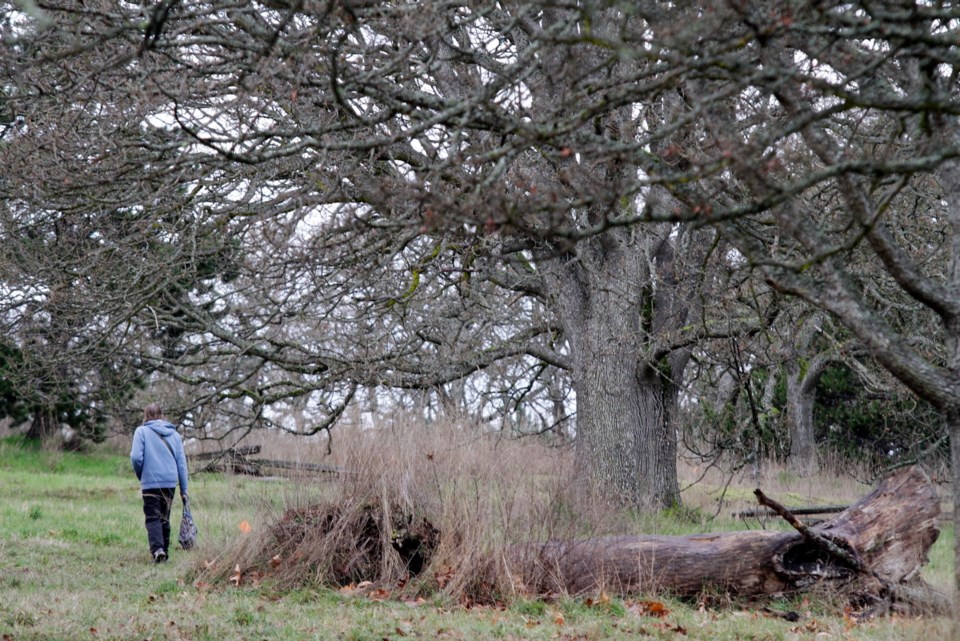Victoria’s urban forest is aging and in need of a significant replacement program that diversifies the species and ages of trees, says a new Urban Forest Master Plan, endorsed by Victoria councillors.
The city’s aging tree population “is a real issue,” said David Speed, Victoria’s recently retired assistant parks director, who presented the master plan to council.
“With increasing densification ... we’re losing a lot of our mature trees and we don’t have a lot of good sites for planting new trees as new buildings take up 90 per cent of a footprint of a property,” Speed said.
Victoria has an estimated 150,000 trees, of which about 40,000 are city owned, Speed said.
The master plan outlines challenges facing Victoria’s urban forest, including:
n Climate change. The region is expected to see more extreme wind- and rainstorms, as well as more prolonged summer drought and new pests. That means species that have traditionally fared well may no longer be appropriate.
n About two-thirds of highly or moderately treed areas are on private land and outside the city’s direct control.
n Increasing infill and densification limits availability of green space for growing new large trees
n Development has degraded the quality of the city’s watersheds and biodiversity.
While some areas have good tree cover, there are significant areas with very little, Speed said. And much of the city’s street tree population is over-mature — a situation which will leave significant gaps if not addressed. Meanwhile, private and public funding sources are limited.
“The dollars are actually really good to plant trees. Where we struggle is dollars to actually manage the trees well,” Speed said.
He said trees “are more than just a pretty face” and one of the goals of the plan is to get across the message that urban forests play a vital role. “A small little grove of conifer trees can do for you what underground storm water sewers can do for you,” he said.
The master plan was developed over three years under the guidance of urban forestry consultants Gye and Associates and Judith Cullington and Associates.
The plan’s four goals are: to develop and maintain strong community support for the urban forest; protect, enhance and expand the city’s forest; design and manage the forest to maximize watershed health, biodiversity and conservation of sensitive ecosystems; and maximize the community benefits from the urban forest in all neighbourhoods.
Included in the plan’s recommendations are: hiring an urban forester and expansion of the city’s existing urban forestry program. City staff recommend that the city’s $1 million urban forestry program be “reviewed and prioritized” based on the plan’s recommendations.
While generally lauded by councillors, Coun. Geoff Young voted against the plan. It has “a lot of good ideas,” Young said, but he felt it didn’t fairly address the pros and cons that urban forests present.
“It doesn’t recognize that there’s a plus and a minus to most of the things it’s talking about,” Young said. For example, there’s inherent conflicts between trees and density, trees and infrastructure like asphalt or underground services, and trees and solar power, he said.



